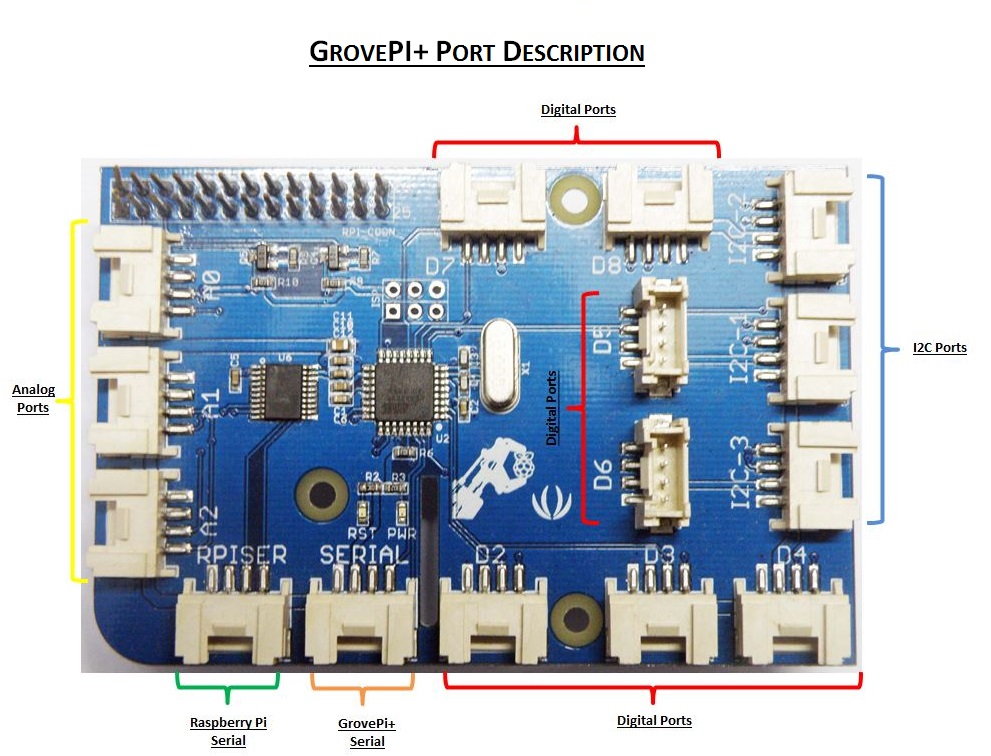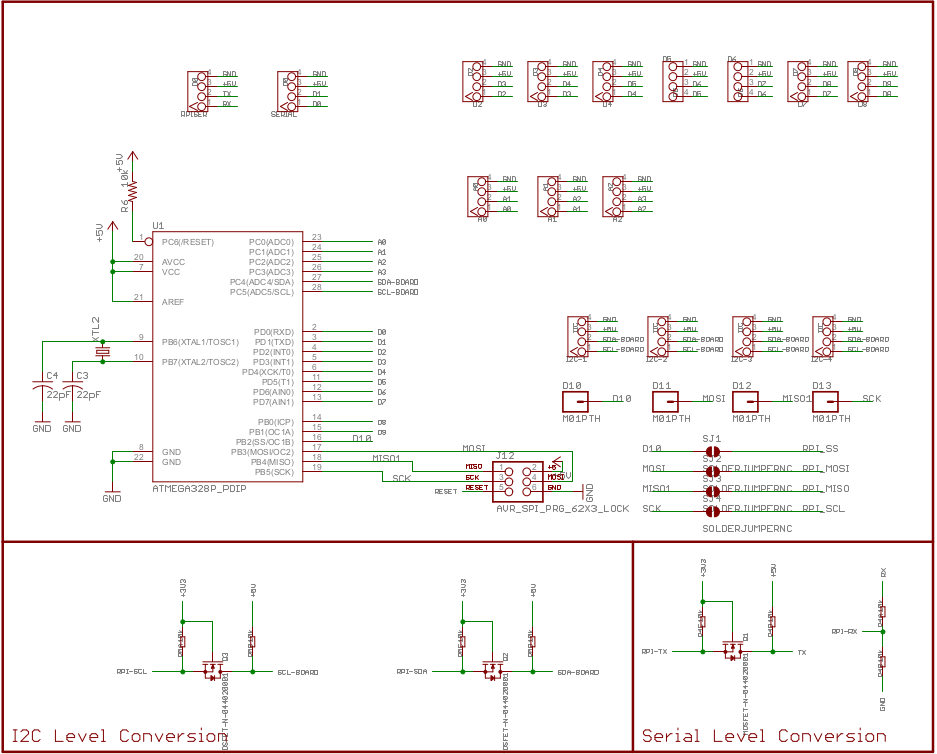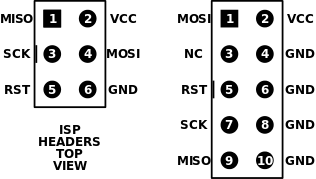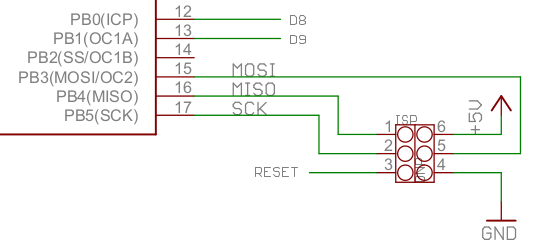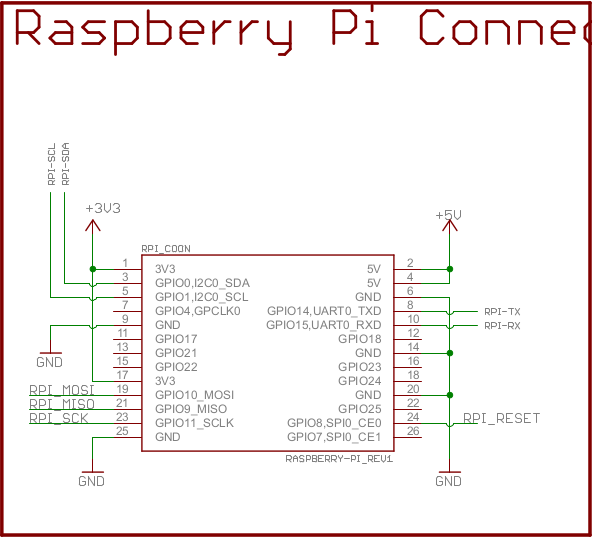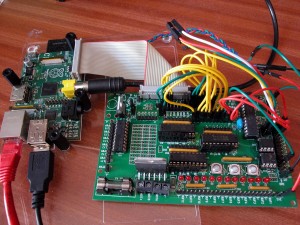事實上在 W!o+ 的年代,早就不生產『藍色圖紙』的了。當然什麼是『藍圖』一事,也就沒有什麼人知道了!現今回想起 Mrphs 所講之事,不經令人唏噓!也不知該喜該憂?只不過聽到 W!o+ 還是很喜歡用『紙張顯示器』。他說︰要知道『豹』之所以為『豹』??僅曉得『豹骨』、『豹皮』、『豹行』…… 種種依然不足!!就像閱讀古代文獻,雖然自以為較『古人』所知為多,卻為何仍舊無法明白其之『所指』的呢??若是『初生之子』可以學會『任何語言 』,卻不能用『不同言語』內外溝通,豈不奇怪的哩!!如是看來 ,『具體』和『抽象』終究是『一線之隔』,所謂『半‧示意』︰
A semi-schematic diagram combines some of the abstraction of a purely schematic diagram with other elements displayed as realistically as possible, for various reasons. It is a compromise between a purely abstract diagram (e.g. the schematic of the Washington Metro) and an exclusively realistic representation (e.g. the corresponding aerial view of Washington).

A semi-schematic map: Tabula Peutingeriana. While roads and features appear as abstract representations without resemblance to reality, their locations, orientations, and distances are as accurate as possible to make the map practical.
不過是努力『全豹』之『表達』!!然而『理則』上或難『全通』的吧??思考『科技』與『人文』都發生於『自然』,『時空』中『根本自生』之事,又怎該有什麼『本質不同』的呢??!!
祇因當時作者忙著煩惱前往『湖心小築』之費用有無 ,一時疏忽,遂致不能知到底 W!o+ 是否曾經談過什麼是『方塊圖』沒有?? !!
A block diagram is a diagram of a system in which the principal parts or functions are represented by blocks connected by lines that show the relationships of the blocks.[1] They are heavily used in engineering in hardware design, electronic design, software design, and process flow diagrams.
Block diagrams are typically used for higher level, less detailed descriptions that are intended to clarify overall concepts without concern for the details of implementation. Contrast this with the schematic diagrams and layout diagrams used in electrical engineering, which show the implementation details of electrical components and physical construction.

───
如今果將『妄心無明』耶???竟然也『吃過豬肉』卻忘了豬肉『是何滋味』的乎!!!
有人問︰《莎士比亞》戲劇寫的好嗎?寫的很好,但是沒有什麼人讀!問︰為什麼呢??它用的是十六世紀的『古英文』。你是說『文外文』喔!!不是『文外文』,是那個時代的『白話文』。此時問者『三條線』︰不是『過去的』都是『文□文』。答︰要這麼講的話,那個五四之『白話文』也是『過去的』,現今火紅的是『唱給你聽』、『演給你看』以及『跳給你讚』,即使『後現代』 、『火星語』都已經『落伍』,新潮流是『聽圖看話』…趕忙打斷來問︰『聽』圖?『看』話?有沒有搞錯??答︰ 不信!去 LINE 一下,哩兜哉樣!!
要說『秦始皇』推動『車同軌,書同文。』是好事嗎?再講到推動『國同語』呢??試看『滿族』之『語言』和『文字』已經成為了『保護資產』,此事『康熙大帝』當時果真能得先見,料想知之的嘛 !以此觀之
漢賦、唐詩、宋詞、元曲、明清小說。
,如果沒有人『讀』,自然就『消逝』時流之中,等待再次被『人』發現的吧!!
元代王實甫著《西廂記》── 金聖嘆評為『第六才子書』 ── 是『文言文』,這《西廂記》改自
唐‧元稹‧《鶯鶯傳》 ── 《會真記》,更是『古文言文』,何妨當作『非現代』之『金星文』 Touch Touch
鶯鶯傳
唐 貞元中,有張生者,性溫茂,美丰容,內秉堅孤,非禮不可入。或朋從遊宴,擾雜其間,他人皆汹汹拳拳[1],若將不及;張生容順而已,終不能亂。以是年二十 三,未嘗近女色。知者詰之,謝而言曰:「登徒子非好色者,是有淫行耳。余真好色者,而適不我值。何以言之?大凡物之尤者,未嘗不留連於心,是知其非忘情者 也。 」詰者哂之。
無 幾何,張生遊於蒲,蒲之東十餘里,有僧舍曰普救寺,張生寓焉 。適有崔氏孀婦,將歸長安,路出於蒲,亦止茲寺。崔氏婦,鄭女也;張出於鄭,緒其親,乃異派之從母。是歲,渾瑊(ㄓㄣ針)薨於蒲,有中人丁文雅,不善於 軍,軍人因喪而擾,大掠蒲人。崔氏之家,財產甚厚,多奴僕,旅寓惶駭,不知所託。先是,張與蒲將之黨有善,請吏護之,遂不及於難。十餘日,廉使杜確將天子 命以總戎節,令於軍,軍由是戢(ㄐㄧˊ集)。
鄭 厚張之德甚,因飾饌以命張,中堂宴之。復謂曰:「姨之孤嫠(ㄌㄧˊ里)未亡,提攜幼稚,不幸屬師徒大潰,實不保其身,弱子幼女 ,猶君之生也,豈可比常恩哉?今俾以仁兄禮奉見,冀所以報恩也 。」命其子,曰歡郎,可十餘歲,容甚溫美。次命女曰:「鶯鶯,出拜爾兄,爾兄活爾。」久之辭疾,鄭怒曰:「張兄活爾之命,不然,爾且擄矣,能復遠嫌乎?」 久之乃至,常服睟(ㄙㄨㄟˋ碎)容,不加新飾。鬟垂黛接,雙臉斷紅[2]而已,顏色豔異,光輝動人。張驚為之禮,因坐鄭旁。以鄭之抑而見也,凝睇怨絕,若 不勝其體者。問其年紀,鄭曰:「今天子甲子歲之七月,今貞元庚辰,生十七年矣。」張生稍以詞導之,不對,終席而罷。
張 自是惑之,願致其情,無由得也。崔之婢曰紅娘,生私為之禮者數四,乘間遂道其衷。婢果驚沮,腆然而奔,張生悔之。翌日,婢復至,張生乃羞而謝之,不復云所 求矣。婢因謂張曰:「郎之言,所不敢言,亦不敢泄。然而崔氏之族姻,君所詳也,何不因其德而求娶焉?」張曰:「予始自孩提,性不苟合。或時紈綺閒居,曾莫 流盼。不為當年,終有所蔽。昨日一席間,幾不自持。數日來,行忘止,食忘飽,恐不能逾旦暮。若因媒氏而娶,納采問名,則三數月間,索我於枯魚之肆矣。爾其 謂我何?」婢曰:「崔之貞順自保,雖所尊不可以非語犯之,下人之謀,固難入矣。然而善屬文,往往沈吟章句,怨慕者久之。君試為喻情詩以亂之,不然,則無由 也。」張大喜,立綴春詞二首以投之。
是 夕,紅娘復至,持彩箋以授張曰:「崔所命也。」題其篇曰《明月三五夜》,其詞曰:「待月西廂下,迎風戶半開。拂牆花影動,疑是玉人來。」張亦微喻其旨,是 夕,歲二月旬有四日矣。崔之東有杏花一株,攀援可踰。既望之夕,張因梯其樹而踰焉,達於西廂,則戶半開矣。紅娘寢於床上,因驚之。紅娘駭曰:「郎何以 至?」張因紿(ㄉㄞˋ待)[3]之曰:「崔氏之箋召我也,爾為我告之。」無幾,紅娘復來,連曰:「至矣!至矣!」張生且喜且駭,必謂獲濟。
及 女至,則端服嚴容,大數張曰:「兄之恩,活我之家厚矣。是以慈母以弱子幼女見託。奈何因不令之婢,信淫逸之詞,始以護人之亂,而終掠亂以求之,是以亂易 亂,其去幾何?誠欲寢其詞,則保人之奸,不義;明之於母,則背人之惠,不祥;將寄於婢僕,又懼不得發其真誠。是用託短章,願自陳啟,猶懼兄之見難,是用鄙 靡之詞,以求其必至。非禮之動,能不愧心,特願以禮自持,無及於亂。」言畢,翻然而逝。張自失者久之,復踰而出,於是絕望。
數 夕,張君臨軒獨寢,忽有人覺之。驚駭而起,則紅娘斂衾攜枕而至。撫張曰:「至矣!至矣!睡何為哉?」並枕重衾而去。張生拭目危坐,久之,猶疑夢寐,然而修 謹以俟。俄而,紅娘捧崔氏而至,至則嬌羞融冶,力不能運支體,曩時端莊,不復同矣。是夕,旬有八日也,斜月晶瑩,幽輝半床。張生飄飄然,且疑神仙之徒,不 謂從人間至矣。有頃,寺鐘鳴,天將曉,紅娘促去。崔氏嬌啼宛轉,紅娘又捧之而去,終夕無一言。張生辨色而興,自疑曰:「豈其夢邪?」及明,睹妝在臂,香在 衣,淚光熒熒然,猶瑩於茵席而已。
是 後十餘日,杳不復知。張生賦《會真詩》三十韻,未畢,而紅娘適至。因授之以貽崔氏。自是復容之,朝隱而出,暮隱而入,同安於曩所謂西廂者,幾一月矣。張生 常詰鄭氏之情,則曰:「我不可奈何矣,因欲就成之。」無何,張生將之長安,先以情諭之。崔氏宛無難詞,然而愁怨之容動人矣。將行之再夕,不復可見,而張生 遂西下。數月,復游於蒲,會於崔氏者又累月。
崔 氏甚工刀札,善屬文,求索再三,終不可見。往往張生自以文挑之,亦不甚觀覽。大略崔之出人者,藝必窮極,而貌若不知;言則敏辯,而寡於酬對。待張之意甚 厚,然未嘗以詞繼之。時愁豔幽邃,恆若不識;喜慍之容,亦罕形見。異時獨夜操琴,愁弄悽惻,張竊聽之,求之,則終不復鼓矣。以是愈惑之。
張 生俄以文調及期,又當西去。當去之夕,不復自言其情,愁歎於崔氏之側。崔已陰知將訣矣,恭貌怡聲,徐謂張曰:「始亂之,終棄之,固其宜矣,愚不敢恨。必也 君亂之,君終之,君之惠也;則沒身之誓,其有終矣,又何必深感於此行?然而君既不懌(ㄧˋ義)[4],無以奉寧。君常謂我善鼓琴,嚮時羞顏,所不能及。今 且往矣,既君此誠。」因命拂琴,鼓《霓裳羽衣序》,不數聲,哀音怨亂,不復知其是曲也。左右皆歔欷,崔亦遽止之。投琴,泣下流漣,趨歸鄭所,遂不復至。明 旦而張行。
明 年,文戰不勝,張遂止於京,因貽書於崔,以廣其意。崔氏緘報之詞,粗載於此。云:「捧覽來問,撫愛過深,兒女之情,悲喜交集。兼惠花勝[5]一合,口脂五 寸,致耀首膏唇之飾。雖荷殊恩,誰復為容?睹物增懷,但積悲歎耳。伏承示於京中就業,進修之道,固在便安。但恨僻陋之人,永以遐棄,命也如此,知復何言? 自去秋已來,常忽忽如有所失,於喧嘩之下,或勉為語笑,閒宵自處,無不淚零。乃至夢寐之間,亦多敘感咽離憂之思,綢繆繾綣,暫若尋常;幽會未終,驚魂已 斷。雖半衾如暖,而思之甚遙。一昨拜辭,倏逾舊歲。長安行樂之地,觸緒牽情,何幸不忘幽微,眷念無斁(ㄧˋ義)[6]。鄙薄之志,無以奉酬。至於終始之 盟,則固不忒。憶昔中表相因,或同宴處,婢僕見誘,遂致私誠。兒女之心,不能自固。君子有援琴之挑,鄙人無投梭之拒。及薦寢席,義盛意深,愚細之情,永謂 終託。豈期既見君子,而不能定情,致有自獻之羞,不復明侍巾幘(ㄗㄜˊ責)。沒身永恨,含歎何言?倘仁人用心,俯遂幽眇(ㄇㄧㄠˇ秒);雖死之日,猶生之 年。如或達士略情,舍小從大,以先配為醜行,謂要盟之可欺。則當骨化形銷,丹誠不泯;因風委露,猶託清塵。存沒之誠,言盡於此;臨紙嗚咽,情不能申。千萬 珍重!珍重千萬!玉環一枚,是兒嬰年所弄,寄充君子下體所佩。玉取其堅潔不渝,環取其終始不斷。兼亂絲一絇(ㄑㄩˊ渠)[7],文竹茶碾子一枚。此數物不 足見珍,意者欲君子如玉之貞,俾志如環不解,淚痕在竹,愁緒縈絲,因物達情,永以為好耳。心邇身遐,拜會無期,幽憤所鍾,千里神合。千萬珍重!春風多厲, 強飯為嘉。慎言自保,無以鄙為深念。」
張生發其書於所知,由是時人多聞之。所善楊巨源,好屬詞,因為賦《崔娘詩》一絕云:
清潤潘郎玉不如,中庭蕙草雪銷初。
風流才子多春思,腸斷蕭娘一紙書。
河南元稹,亦續生《會真詩》三十韻。詩曰:
微月透簾櫳,螢光度碧空。遙天初縹緲,低樹漸蔥朧。
龍吹過庭竹,鸞歌拂井桐。羅綃垂薄霧,環珮響輕風。
絳節隨金母,雲心捧玉童。更深人悄悄,晨會雨濛濛。
珠瑩光文履,花明隱繡龍。瑤釵行彩鳳,羅帔(ㄆㄟˋ配)掩丹虹。
言自瑤華浦,將朝碧玉宮。因遊洛城北,偶向宋家東。
戲調初微拒,柔情已暗通。低鬟蟬影動,回步玉塵蒙。
轉面流花雪,登床抱綺叢。鴛鴦交頸舞,翡翠合歡籠。
眉黛羞偏聚,唇朱暖更融。氣清蘭蕊馥,膚潤玉肌豐。
無力慵移腕,多嬌愛斂躬。汗流珠點點,髮亂綠蔥蔥。
方喜千年會,俄聞五夜窮。留連時有恨,繾綣意難終。
慢臉含愁態,芳詞誓素衷。贈環明運合,留結表心同。
啼粉流宵鏡,殘燈遠暗蟲。華光猶苒苒,旭日漸曈曈。
乘鶩還歸洛,吹簫亦上嵩。衣香猶染麝,枕膩尚殘紅。
冪冪臨塘草,飄飄思渚蓬。素琴鳴怨鶴,清漢望歸鴻。
海闊誠難渡,天高不易沖。行雲無處所,蕭史在樓中。
張 之友聞之者,莫不聳異之,然而張志亦絕矣。稹特與張厚,因徵其詞。張曰:「大凡天之所命尤物也,不妖其身,必妖於人。使崔氏子遇合富貴,乘寵嬌,不為雲為 雨,則為蛟為螭(ㄔ吃),吾不知其所變化矣。昔殷之辛,周之幽,據百萬之國,其勢甚厚。然而一女子敗之,潰其眾,屠其身,至今為天下僇笑。予之德不足以勝 妖孽,是用忍情。」於時坐者皆為深嘆。
後歲餘,崔已委身於人,張亦有所娶。適經所居,乃因其夫言於崔,求以外兄見。夫語之,而崔終不為出。張怨念之誠,動於顏色,崔知之,潛賦一章,詞曰:
自從銷瘦減容光,萬轉千迴懶下床。
不為旁人羞不起,為郎憔悴卻羞郎。
竟不之見。後數日,張生將行,又賦一章以謝絕之:
棄置今何道,當時且自親。
還將舊時意,憐取眼前人。
自是絕不復知矣。時人多許張為善補過者矣。余嘗於朋會之中,往往及此意者,夫使知者不為,為之者不惑。貞元歲九月,執事李公垂,宿於余靖安里第,語及於是。公垂卓然稱異,遂為《鶯鶯歌》以傳之。崔氏小名鶯鶯,公垂以命篇。
歌曰:
伯勞飛遲燕飛疾,垂楊綻金花笑日。
綠窗嬌女字鶯鶯,金雀婭鬟年十七。
黃姑上天阿母在,寂寞霜姿素蓮質。
門掩重關蕭寺中,芳草花時不曾出。
河橋上將亡官軍,虎旗長戰交壘門。
鳳凰詔書猶未到,滿城戈甲如雲屯。
家家玉貌棄泥土,少女嬌妻愁被虜。
出門走馬皆健兒,紅粉潛藏欲何處?
嗚嗚阿母啼向天,窗中抱女投金鈿。
鉛華不顧欲藏艷,玉顏轉瑩如神仙。
此時潘郎未相識,偶住蓮館對南北。
潛歎悽惶阿母心,為求白馬將軍力。
明明飛詔五雲下,將選金門兵悉罷。
阿母深居雞犬安,八珍玉食邀郎餐。
千言萬語對生意,小女初笄為姊妹。
丹誠寸心難自比,寫在紅箋方寸紙。
寄與春風伴落花,彷彿隨風綠楊裡。
窗中暗讀人不知,剪破紅綃裁作詩。
還怕香風易飄蕩,自令青鳥口啣之。
詩中報郎含隱語,郎知暗到花深處。
三五月明當戶時,與郎相見花間路。
如此,自己吃過了豬肉,真憑實據,又哪會『空口』說『白話』的呢!就算有人『踩盤子』摔杯子,真才實料,豈在意『信口』敢『雌黃』!!
─── 引自《字詞網絡︰ WordNet 《五》 白話文 □○?○□!》
cd project/ pi@raspberrypi ~/project
![Rendered by QuickLaTeX.com ino init -t grovepi Traceback (most recent call last): File "/usr/local/bin/ino", line 6, in <module> main() File "/usr/local/lib/python2.7/dist-packages/ino/runner.py", line 76, in main args.func(args) File "/usr/local/lib/python2.7/dist-packages/ino/commands/init.py", line 46, in run '.', ignore=lambda *args: ['manifest.ini']) File "/usr/local/lib/python2.7/dist-packages/ino/commands/init.py", line 56, in copytree names = os.listdir(src) OSError: [Errno 2] No such file or directory: '/usr/local/lib/python2.7/dist-packages/ino/templates/grovepi' pi@raspberrypi ~/project](http://www.freesandal.org/wp-content/ql-cache/quicklatex.com-c484f54e299e68e2c14b077eb70c8da9_l3.png)
